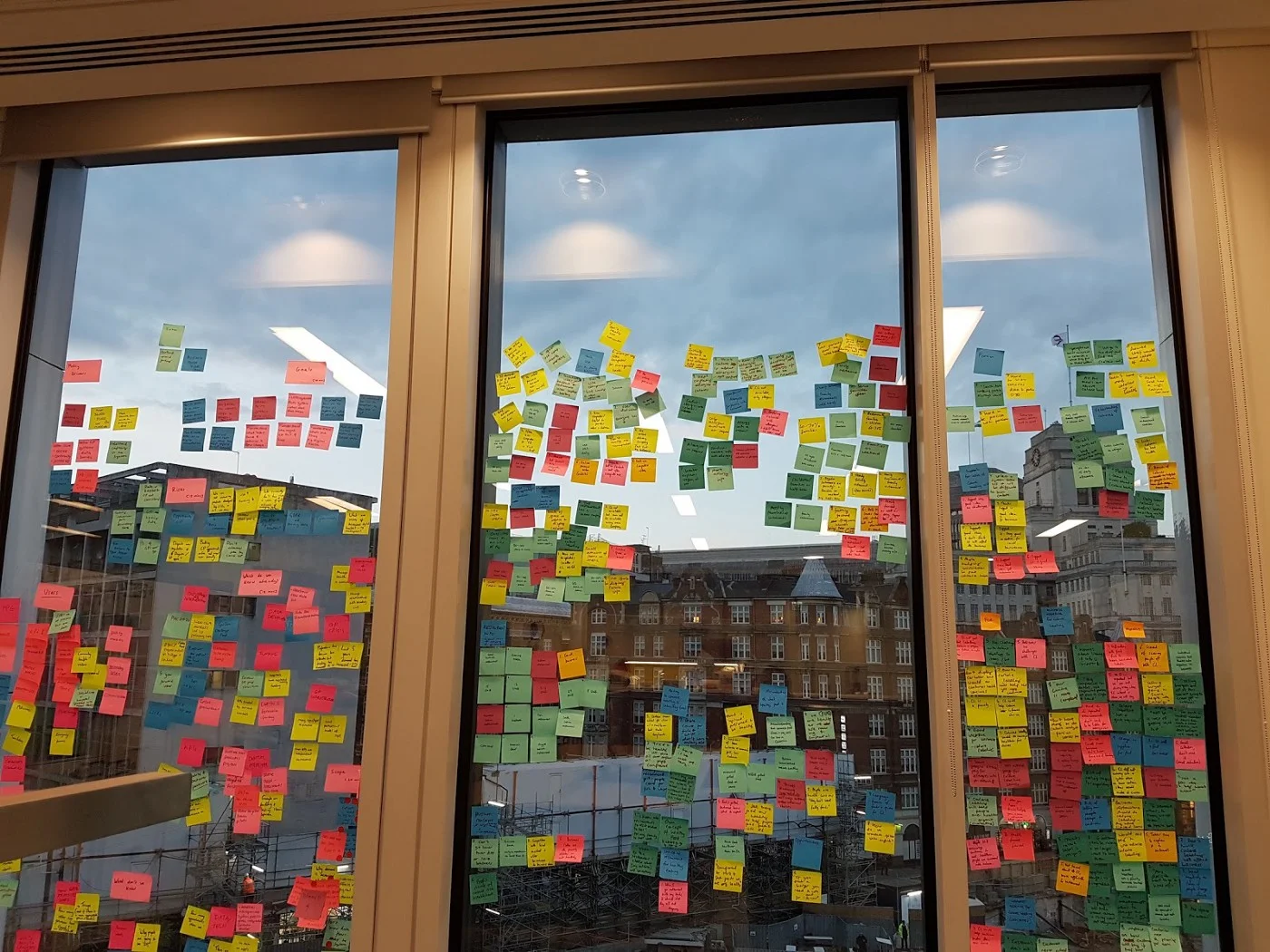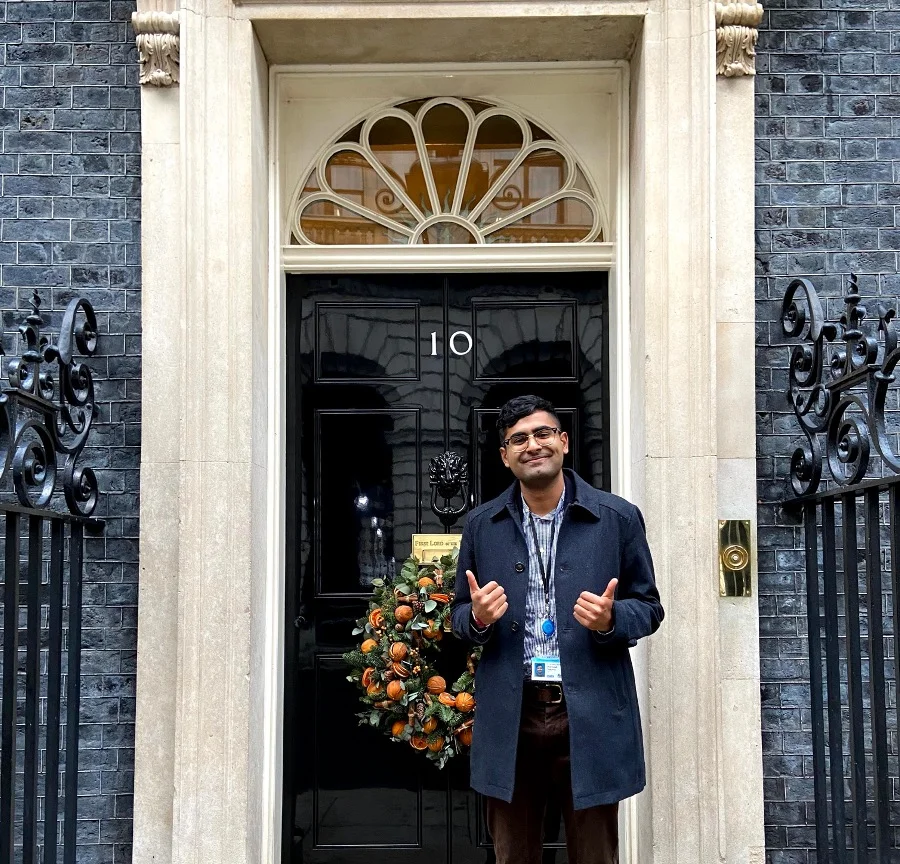I help policy and digital teams across the health and care space build digital services. These services can be broad, wide-ranging, and have a huge impact on a number of users. Deciding where to focus and setting scope is hard.
This is why inceptions are so useful.
Inception brings all the right people into the room and gives you the opportunity to gain a common understanding, set goals and identify your biggest risks.
The excellent, Will Myddelton, a user researcher at Government Digital Service wrote about running an inception. I recommend you read it. I borrow heavily from his example, and I’ve added some things that have worked for me.
 A picture of an inception I ran with a policy team! Looks a little hectic but you can start to make out groupings.
A picture of an inception I ran with a policy team! Looks a little hectic but you can start to make out groupings.
Setting the structure:
Top tip: make sure you assign responsibilities to people before an inception. Get someone to run it, drive the conversation, time keep, and have someone to help with affinity mapping.
- Introduction, roles and responsibilities [5 mins]
In a multi-disciplinary digital team, responsibilities are well defined. When working with policy professionals this isn’t always the case. Set out from the beginning who will be involved with this piece of work and for how long. Sharing responsibilities is fine — just make sure there is real ownership of a piece of work.
Top tip: have key decision makers at the inception. Inceptions help to build a shared understanding. Hopefully, after the inception, these key decision makers will become your biggest advocates, mainly because they’ve had an opportunity to contribute to the discussions.
- What’s your goal? [10 mins]
What are you trying to achieve? Do you want to understand the user need behind an idea you have? Or maybe you want to better understand the market space. Whatever it is, setting a goal early keeps you focused.
My recommendation is to get each person at the inception to write their thoughts down onto a sticky note, and then ask them to stick it onto a wall. As they do, ask them to explain it. In fact, for each part of the inception, you want people to have an opportunity to write down their thoughts and then to talk through them.
Top tip: come back to this at the end of your inception. Does the goal remain the same?
- What do we know already? [15 mins]
If you have limited time and capacity, then this part is critical. If work has already been done in an area, then use it, there is no point re-inventing the wheel.
Things to think about: What assumptions have we made about our users? Where did this idea come from? What’s going on this space already? (tech and social trends) What unresolved problems do you see?
Once you’ve done this, you can start to group common items together.
- What don’t we know? [15 mins]
Be honest about what you don’t know much about.
Again, get each person (on their own), to write down on a sticky note, things they don’t know. As they stick the notes onto a wall, get them to talk through their ideas. I would then recommend grouping ideas together.
- Scope [20 mins]
The ‘what don’t we know’ section will give you a broad range of areas to focus on.
As a team, ask yourself: What’s our area of focus? Does this work meet our goal? Is this a rabbit hole?
Each person gets three dot votes. The groupings that have the most dot votes should be your area of focus.
- Risks [15 mins]
Think about potential pitfalls to your project. Discuss and see how you can mitigate those risks.
- Icebox
If someone mentions something interesting but it isn’t directly relevant to the inception, then I recommend putting it in the icebox. You are not dismissing ideas but promising to come back to it at a later date.
Conclusion
I hope you’ve found this useful. This has served me well working with policy teams — especially when there is so much happening in the policy space and deciding where to focus is difficult to decide. Adapt the structure to your own needs. The timings have worked for me, but you may need more time to discuss certain areas than I’ve allowed for.

